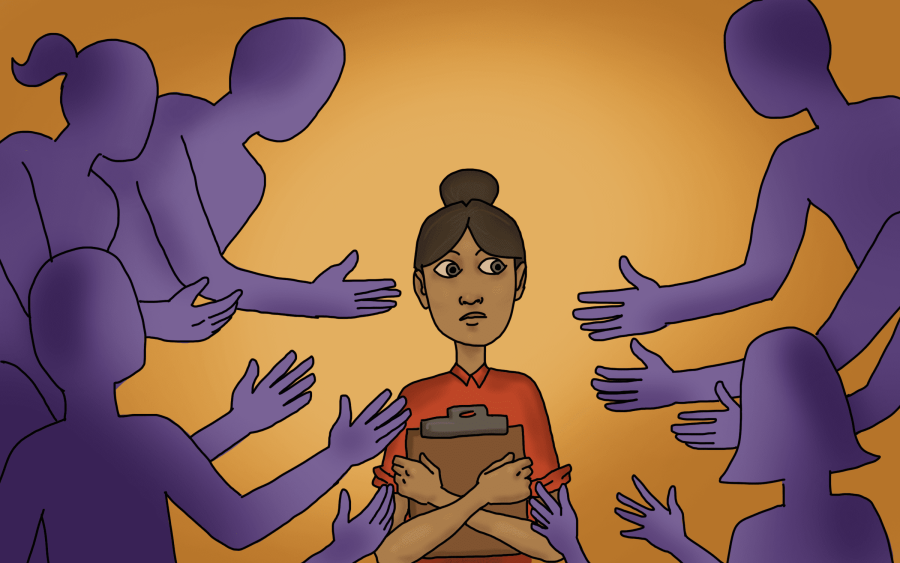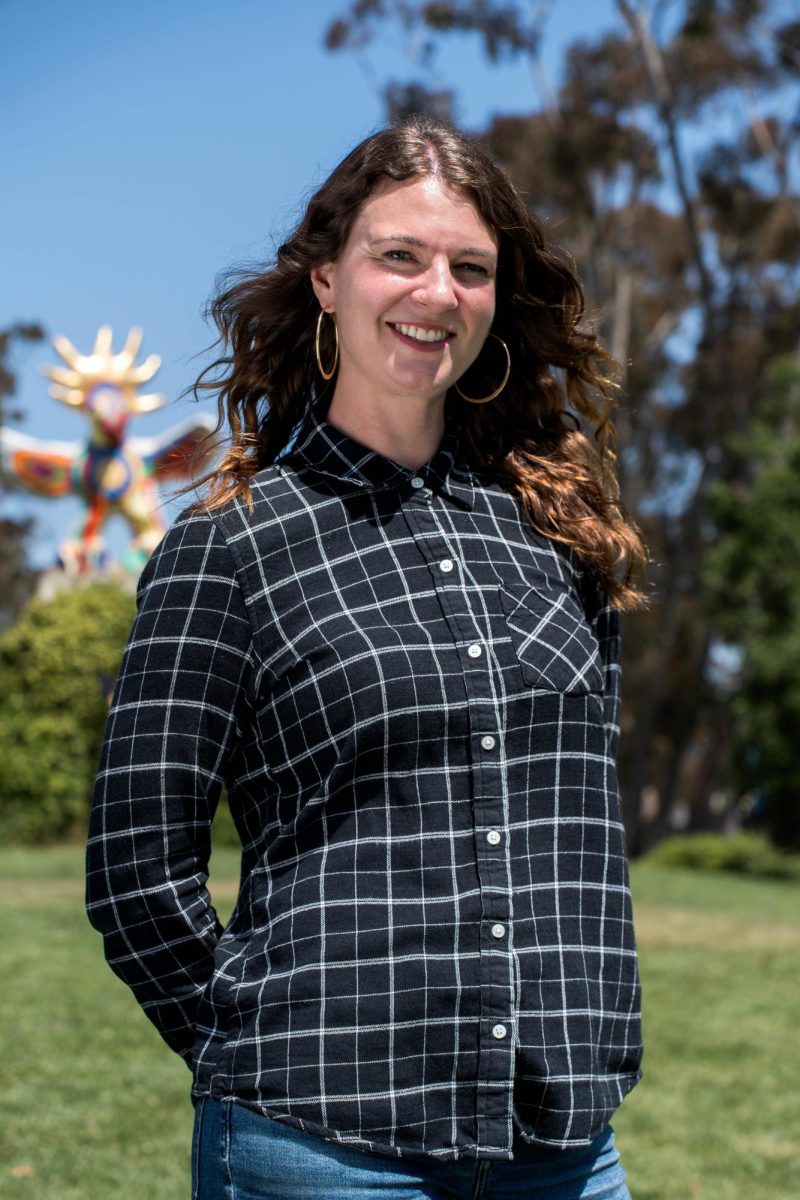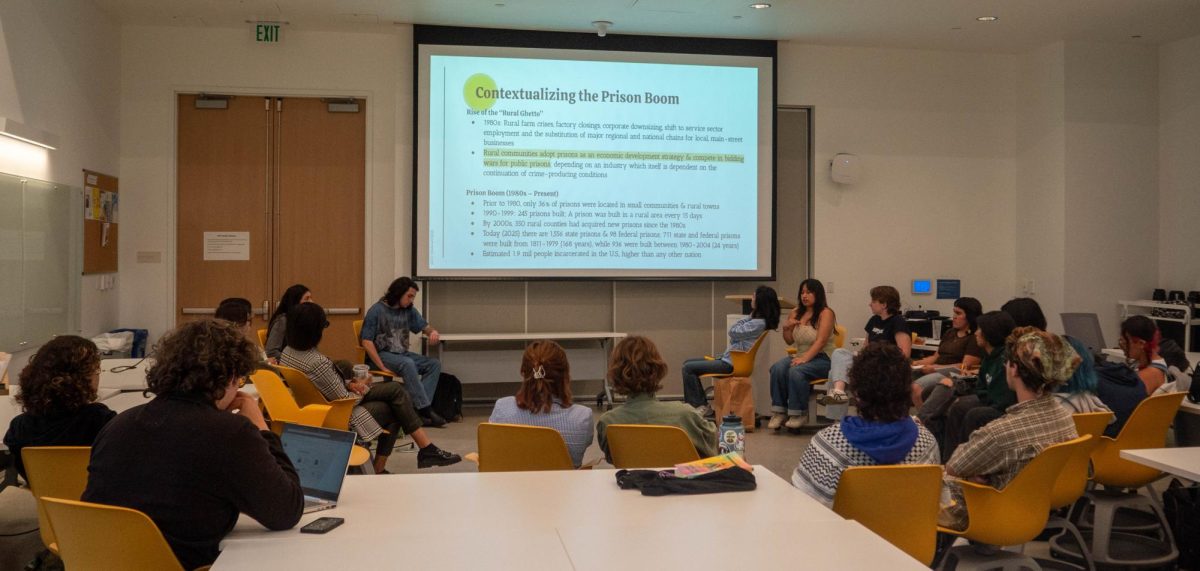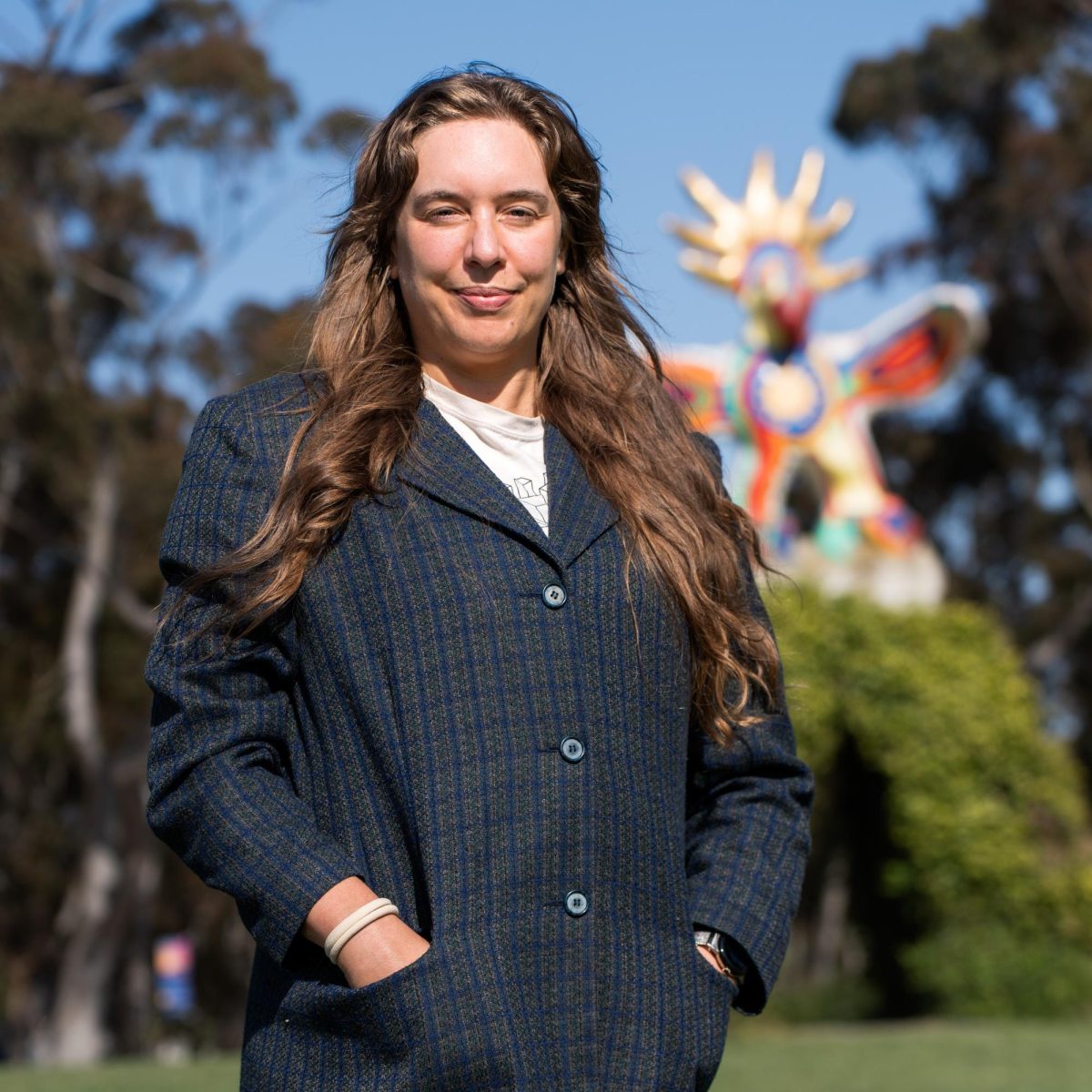Using their observational skills, students get a behind-the-scenes look at the Career Fair.
UCSD can be stressful. As students, we have to balance our time to make sure we are involved in enough extracurriculars yet still get enough sleep to manage our grades. Students fight through each quarter, day by day, with countless thoughts of how to avoid feeling hopeless when they graduate. And with the number of college applicants increasing each year, a college degree will soon become the equivalent of a high school diploma, creating even more competition among students. Here at UCSD, a variety of resources are offered at the Career Center such as job preparation and networking tips. The center aims to support every student through a wide range of services and events to help develop their professional skills. One of the more popular events is the career fair, an event held every quarter where recruiters from different companies come to find and recruit the school’s most brilliant students. However, how effective is it really for students?
As students walked into the ballroom, they saw the looks of angst among fellow career fair attendees holding onto their resumes, their eyes darting around for the shortest line at the company booths. Employers experienced a similar feeling, some of whom were fidgety after seeing the long line of students waiting for them, while others sweated profusely.
During second week of winter quarter, students from the Cognitive Ethnography course, the study of human behavior and culture, set off to start their class assignment by attending the fair as observers. Rather than looking for a job, their job was to survey activity at the career fair and evaluate how the fair functions for participants in terms of interactions between students and employers, as well as spatial layout and traffic flow.
Nan Renner is currently teaching the course. Her enthusiasm for distributed cognition, the theory that cognitive processes extend beyond the brain, comes from her lengthy experience working at the San Diego Natural History Museum. She has guided students toward seeing their world in different perspectives throughout the course. To do so, her students engage in projects such as taking photographs of people doing an activity, taking audio recordings and conducting interviews with strangers. She hopes that students can use the skills they learned in the course and apply them to the career fair.
“Our project studying people at the career fair required that students slow down and observe, not to inform their own actions, but to discover relationships and patterns in human behavior in a designed environment,” Renner told the the UCSD Guardian. “In addition to developing observational skills, this project provides an experience that contrasts with an upcoming project in which students will study behavior using video recording. By comparing observational methods of activity while it is happening versus recorded on video, students should understand the pros and cons of each of these approaches.”
One of the students in the Cognitive Ethnography course is Revelle College sophomore Isaac Fehr, research assistant at The Design Lab. He considers the current career fair to be very inefficient because most of the students’ attention is solely focused on popular companies.
“The lines at the popular booths are so long that most people only talk to one or two employers, but then hardly anyone goes to the rest of the booths,” Fehr told the Guardian. “Big companies conduct their booths in one of two very slow ways: one-on-one talks, which take too long for most people to get a chance at the companies they’d like to work for, or group briefing and resume collecting, which is no better than looking at their website and emailing them your resume.”
Other students, like Eleanor Roosevelt College junior Nick Dudeck, gained valuable insight on how spatial organization affects an individual’s perception of the job market. He advocates for changes in future career fairs, as the current setup is inefficient for all involved, from students to staff to employers.
“I would recommend that for future fairs, organization of the tables be positioned in such a way that does not cause traffic and long lines,” Dudeck told the Guardian.”I observed that a lot of students left the booths either in high spirits about their real-world capabilities, or discouraged and flummoxed in their own self-image.”
Currently, the program coordinators are gathering feedback by conducting surveys to create more successful events in the future. There were around 1,700 students in attendance along with over 70 companies, such as Target and GoFundMe, for the winter Career Fair. Wil Dyer, the interim director at the Career Services Center, organized the collaboration between the Cognitive Science Department, Design Lab and Career Center and said he wishes to support the students, alumni and employers of UCSD by improving the overall Career Center experience.
“Part of the vision for this is to reimagine the work we do at the Career Center and take a holistic, honest look at what we can enhance to ensure the professional success and mobility of our students,” Dyer told the Guardian. “When students, alumni and companies have positive experiences, they are more likely to stay connected to the university for years to come. Students become grateful alumni, begin working for a company and advocate for their company to recruit from UC San Diego, creating not only grateful students and alumni, but a stronger alumni network and long-lasting, mutually beneficial relationship between UC San Diego and our top employers.”
Improving the career fair is no easy task, but Dyer, who attended the fair himself, envisions this partnership as the first step to improving events hosted by the Career Center.
“It’s no secret that students, career centers and companies all share the overwhelming sentiment that career fairs need to change,” Dyer added. “Our goal right now is to identify the pain points of all parties and strategically prioritize the things we can improve or change to enhance the entire career fair experience. While we are still identifying the pain points right now, I can say a few obvious ones are lines, student-employer interactions and crowds/congestion in the venues.”
Students like Fehr hope to use skills they learn in courses such as Cognitive Ethnography to eliminate biases in future events by keeping interactions as objective as possible.
“In my observation, the male employers paid way more attention to potential employees who are attractive women than those who aren’t,” Fehr said. “At several booths, the representatives would be zoning out while talking to male candidates, then much more alert and in a better mood as soon as a female [student] would walk up.”
Renner will end the COGS 102 series by supporting students in a team project for the the Cognitive Design Studio course, which will be either evaluating a prototype application or redesigning an existing system.
“Design challenges and opportunities can be found anywhere, on and off campus — dining halls, libraries, classrooms, outdoor spaces and more,” Renner said. “Based on skillful observations, students may discover how to make improvements, for example, to improve learning, enhance enjoyment and/or create places that are more inclusive of diverse perspectives and life experiences.







